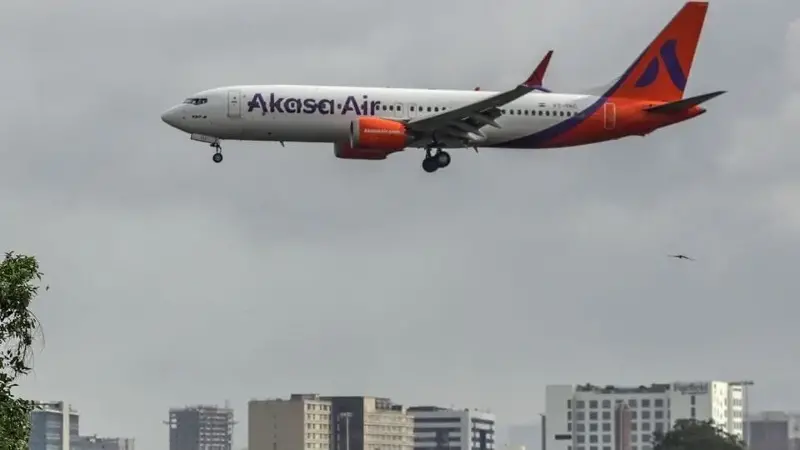
New Delhi: India’s youngest low-cost carrier, Akasa Air, has ambitious plans to expand its international operations, including flights to China, but delays in supply of aircraft by Boeing are holding it back.
Owned by SNV Aviation, the airline, which began flying in August 2022, has bilateral flying rights to at least seven new international destinations, including Uzbekistan, Tashkent, Hanoi, Sri Lanka, the Maldives, Indonesia and Singapore, and is eyeing other routes into China and Africa (Nairobi). Yet, with only 30 aircraft in its fleet and deliveries from Boeing running behind schedule, the carrier finds itself in a holding pattern.
“We have bilaterals. And we hope to be ready in time to deploy the aircraft and grow profitably internationally," Praveen Iyer, Akasa’s co-founder and chief commercial officer told Mint, following a media roundtable. “International ramp-up will happen as and when more aircraft come.”
The privately-held airline, with 5% market share, stopped sharing fleet guidance, following aircraft supply delays. The airline expects aircraft deliveries to normalise mid-2026 and is rolling out hiring plans accordingly.
For now, Akasa’s international network remains limited to six routes — five across West Asia (Doha, Abu Dhabi, Jeddah, Riyadh, and Kuwait) and one to Phuket (Thailand). Flights to Sharjah are expected soon. The airline also serves 24 domestic destinations, with Mumbai, Bengaluru, and Delhi serving as its principal base.
Akasa has committed to 226 aircraft — all under a sale-and-leaseback arrangement — with deliveries spread over the next seven years through 2032. The carrier last took delivery in June–July 2025. The airline has avoided short-term, costly fixes, such as wet or damp leases.
Under a sale-and-leaseback arrangement, air carriers procure aircraft at a discount, sell them to lessors at cost, and immediately lease them back. A wet lease provides an aircraft with crew, maintenance, and insurance, while in a damp lease, the lessee has to provide its own cabin crew.
Akasa plans to receive 196 aircraft in 86 months, or 2 aircraft a month, exactly half of what larger players like IndiGo and Air India are inducting (4 a month).
Akasa is banking on Boeing’s recently-approved ramp-up of production, from 38 to 42 aircraft per month, by the US Federal Aviation Administration (FAA) effective October 2025, to ease delivery timelines. With Boeing increasing production, Iyer said, the airline expects aircraft to come in faster.
“Delivery delays of one to two months will not make any difference,” he said, noting that Akasa is targeting any market within a 5½-hour flight radius from India.
The fleet constraint comes as Akasa seeks to hedge against foreign currency volatility tied to its sale-and-leaseback model. Aircraft transactions are denominated in US dollars, and the airline hopes to balance that exposure through greater dollar earnings from overseas operations.
Akasa wants to become a more internationally-focussed carrier, from being a mainly domestic-oriented one. Its internal projections (in a filing with the Ministry of Corporate Affairs) target a near-tripling of its international capacity share, from 13% to about 40% over the next few years.
“More than international expansion, getting the aircraft is important. The airline has seen delivery delays by Boeing; and lease rental going up among other factors. As deliveries happen, more fuel-efficient aircraft will be inducted. Operating costs will go down,” said Gagan Dixit, analyst at Elara Capital.
For fiscal 2025, Akasa reported revenues of ₹4,582.72 crore and losses of ₹1,983.42 crore, reflecting the high-cost structure and competitive pressure in India’s aviation market.
The airline recently raised ₹1,200 crore (roughly $125 million) in fresh funding from new investors, including Premji Invest, 360 One Asset, and Claypond Capital, along with additional capital from the Jhunjhunwala family, its founding backers. Funds will be deployed toward fleet expansion, technology upgrades, and network growth.
